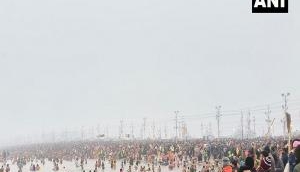Spare Facebook. Fake news isn't ruining news, irresponsible clickbait journalism is

When Donald Trump won the US presidential elections, much to the horror of the wider world, liberal media looked around for someone to blame. After a little contemplation, a suitable fall guy was found in the form of Facebook. Suddenly, every media house from here to Timbuktu carried op-eds on the hijacking of social media by sources promoting fake news.
Facebook was pilloried for its inability to stem the tide of these 'post-truth' pieces that could possibly have swayed the gullible into voting for Trump. Avoiding personal responsibility is something the media does with aplomb, and here too they managed to shift the blame for the result on to Facebook. So much so that Facebook has now introduced extensions meant to help filter fake news.
Also read -Facebook's problem is more complicated than fake news
However, what the media still hasn't acknowledged is that the reason fake news manages to thrive is because of the continued lowering of the bar by actual news houses. Journalistic integrity has been sacrificed at the altar of page views and Google Ad revenue, and until that is checked, no Facebook algorithm or scathing fake news op-ed is going to stem the rot.
A picture is worth a thousand words
Speak to your average Joe about where they consume their news and the odds are that they've forsaken their morning paper, but not for online news sources. Instead, their go-to place for information is usually a news feed on social media.
The problem, however, with such consumption is that the barrage of 'news' is endless. From Kim Kardashian's shocking sideboob to Vladimir Putin's dog's alopecia, everything is 'news' on social media.
In an environment like this, readers start to develop coping mechanisms to keep their heads above water amidst the deluge of information. One way is to never actually delve beyond the surface of what they see on social media. They see a headline with an accompanying picture and try to infer as much as possible about the news piece from this alone. But this can lead to a lot of misconceptions.
For example, during the 'Where is Najeeb' saga, a bag with one pistol and a few cartridges was found on the JNU campus. Every headline was almost the same, variants of 'Gun and cartridges found at JNU', which is more or less enough to inform the reader. However, in their struggle for visibility on social media, various media houses chose to run with images like these:

Suddenly, to the casual reader on Facebook, there's either an active terror module that's been rumbled in one of India's most storied universities, or there's a Burhan Wani-Umar Khalid terrorist connection that's at play.
Yes, anyone who clicked on the story link itself would realise that this isn't the case. However, people rarely actually do so due to the frenetic pace of social media consumption, leading to misinformed people across the board.
Should people pay more attention to news? Certainly. But, based on studies showing that 6 in 10 people share links they haven't even read, we know that isn't the case.
In an environment like this, there is a moral imperative for news houses to be more responsible in their choice of images. Well, at least if their end goal is to spread information rather than just rack up clicks. After all, that is what differentiates journalism from fake news, right?
Sensationalism sells
It isn't just the images either. Often, media houses make a cardinal mistake - assuming that the news on its own is not important enough to drive viewership. It's a belief that has been drilled into the heads of even the staunchest journalists, thanks to sensationalist clickbait headlines beating regular news ones hollow.
Also read -Why do we fall for fake news?
However, in the quest to compete, journalism hasn't found a more sensible middle ground but gone headlong into the clickbait cockfight, getting a whole lot less journalistic in the process. Now, even important news has to don the garb of sensationalism.
Recently, based on how closely you follow the news, you'd have seen numerous reports about the worrying temperature rise in the Arctic regions. However, one particular headline was used by almost every news outlet - 'Polar ice the size of India just vanished!'

It's a terrifying headline. But it's also extremely misleading. If one was to actually go through the articles, they'd realise that polar ice the size of India hasn't just vanished overnight, as the headlines imply. Instead, it is the cumulative difference between polar ice cover in 2010 and 2016. And this is combining the polar ice cover of both the Arctic and the Antarctic.
Once again, readers wouldn't be mislead if they were to actually read through the entire article. However, we all know that isn't the case.
In the same way that people hope to rely on article images they see on their social media feeds, they also hope that the headlines they glimpse give them an accurate picture of what the actual article contains. But media houses have forgotten their responsibility to their viewers as they try desperately to monetise online news.
Sure, fake news probably has more pointed, insidious motives than sensationalist journalism does. But, at the end of the day, if fake news is guilty of misinforming the public, 'real' journalism is no less guilty.
And, while journalists continue to cry foul over the fake news pandemic that they say is ruining the credibility of journalism, perhaps they should introspect and question whether it is the mire of sensationalism created by mainstream journalism that has made it so easy for fake news to take root.
First published: 19 December 2016, 10:10 IST






![BJP's Kapil Mishra recreates Shankar Mahadevan’s ‘Breathless’ song to highlight Delhi pollution [WATCH] BJP's Kapil Mishra recreates Shankar Mahadevan’s ‘Breathless’ song to highlight Delhi pollution [WATCH]](https://images.catchnews.com/upload/2022/11/03/kapil-mishra_240884_300x172.png)

![Anupam Kher shares pictures of his toned body on 67th birthday [MUST SEE] Anupam Kher shares pictures of his toned body on 67th birthday [MUST SEE]](https://images.catchnews.com/upload/2022/03/07/Anupam_kher_231145_300x172.jpg)






